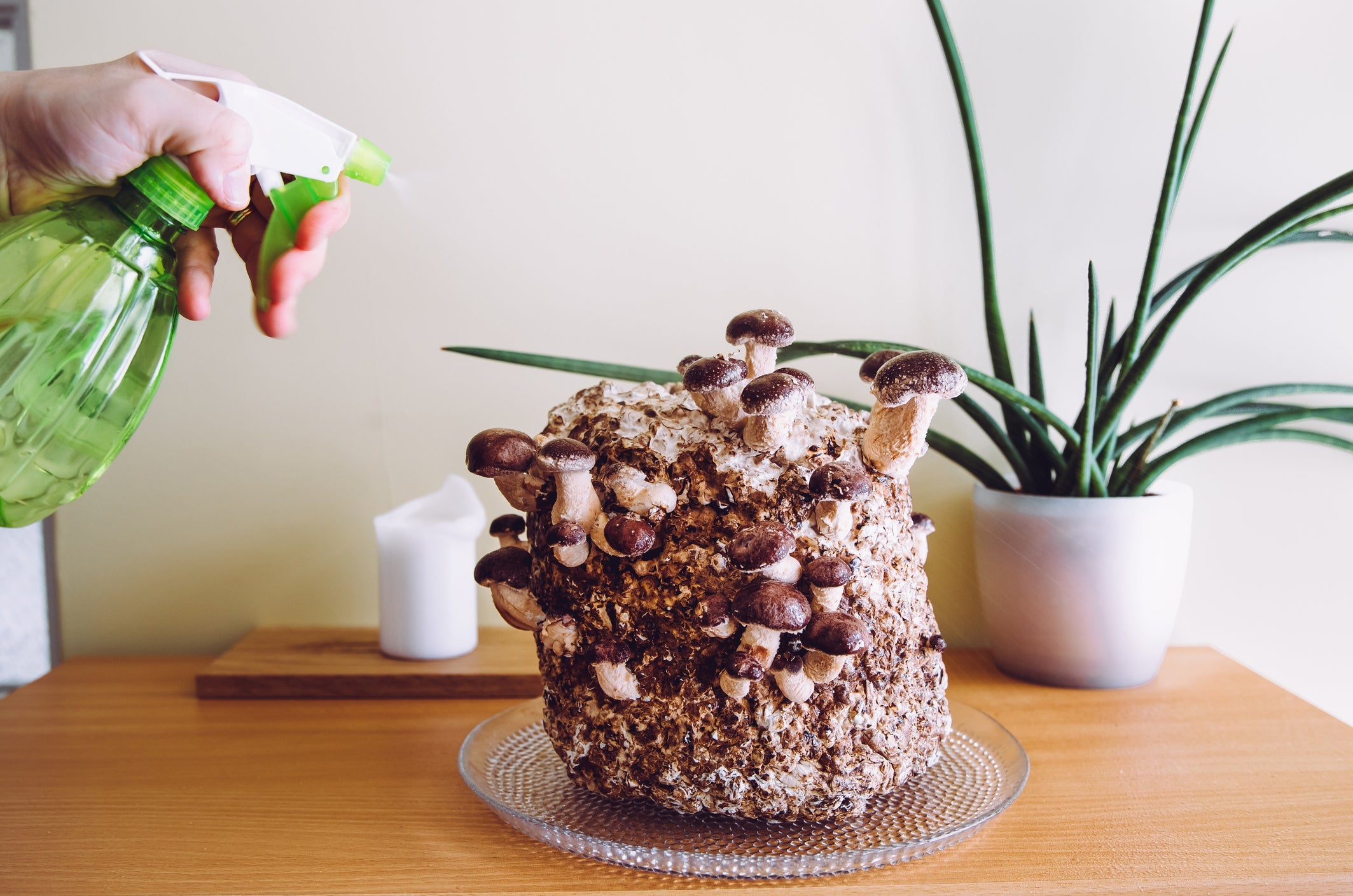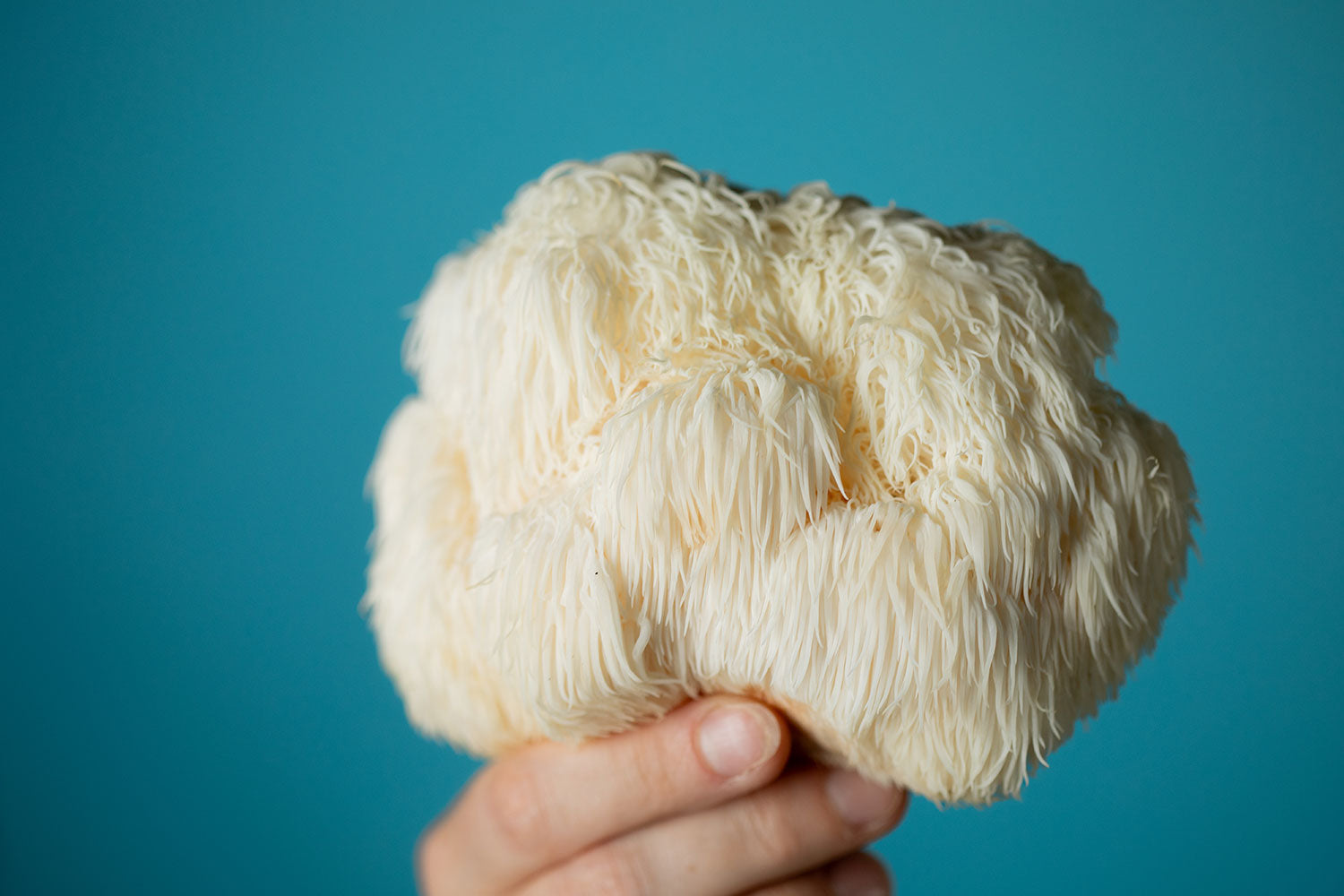How to Grow Mushrooms at Home: A Complete Beginner’s Guide
7 minute read

Growing mushrooms at home can be a rewarding and enjoyable endeavor, whether for culinary purposes, health benefits, or simply as a fascinating hobby. This guide will take you through the essential steps to successfully cultivate mushrooms in your own space, from selecting the right varieties to harvesting your homegrown fungi.
The Best Mushroom Varieties to Grow Indoors for First-Timers
When starting your mushroom-growing journey, it's crucial to select varieties that are well-suited for beginners. Some of the best options include:
-
Oyster Mushrooms: Known for their delicate flavor and quick growth, oyster mushrooms are forgiving and can thrive on a variety of substrates, making them a popular choice for novices.
-
Button Mushrooms: These are the most commonly consumed mushrooms globally. They are easy to grow and can be cultivated in kits available at local gardening stores.
-
Shiitake Mushrooms: Renowned for their rich taste, shiitake mushrooms require a bit more care but are still manageable for beginners. They can be grown on logs or sawdust blocks.
These varieties not only provide a great starting point but also offer health benefits. For instance, mushrooms like Lion’s Mane, which is cultivated by brands such as Stay Wyld Organics, are known for their cognitive-enhancing properties. Such mushrooms can be an excellent addition to any home garden.
In addition to the varieties mentioned, it's worth exploring the fascinating world of mushroom cultivation techniques. For example, many beginners find success using pre-sterilized substrate bags that eliminate the risk of contamination. This method allows for a more straightforward growing process, as it requires less equipment and expertise. Furthermore, the excitement of watching your mushrooms grow can be incredibly rewarding, as they can sprout in just a matter of days under the right conditions.
Another aspect to consider is the environmental impact of growing your own mushrooms. Indoor cultivation can significantly reduce your carbon footprint compared to purchasing store-bought mushrooms, which often involve transportation and packaging. Additionally, many mushroom varieties can be grown on recycled materials, such as coffee grounds or straw, making it an eco-friendly hobby. By choosing to cultivate mushrooms at home, you're not only embarking on a delicious culinary adventure but also contributing positively to the environment.
Step-by-Step: Setting Up Your Home Mushroom Growing Space
Creating the right environment for mushroom growth is essential. Here’s a step-by-step guide to setting up your growing space:
-
Choose a Location: Look for a cool, dark, and humid space in your home, such as a basement or a cupboard. Avoid direct sunlight, as mushrooms thrive in low-light conditions.
-
Prepare the Area: Clean the space thoroughly to minimize contamination risks. Consider using a plastic sheet to cover the floor and walls for easier cleanup.
-
Ventilation: Ensure proper air circulation to prevent stale air, which can hinder growth. A small fan can help maintain airflow without drying out the environment.
By following these steps, a conducive environment for mushroom growth can be established, setting the stage for a successful cultivation experience. Additionally, it's important to monitor the temperature and humidity levels regularly. Ideal conditions for most mushroom species hover around 60-75°F (15-24°C) with humidity levels between 80-95%. You can use a hygrometer to keep track of these conditions, ensuring that your mushrooms have the best chance to thrive.
Furthermore, consider the substrate you will use for growing your mushrooms. Common substrates include straw, wood chips, or even coffee grounds, depending on the mushroom variety you choose. Each type of mushroom has its own preferences, so researching the specific needs of your chosen species will help you prepare the best growing medium. Once the substrate is ready, inoculation with mushroom spores or spawn can begin, marking the exciting start of your mushroom cultivation journey.
Essential Supplies You Need to Start Growing Mushrooms at Home
Before diving into mushroom cultivation, gather the necessary supplies. Here’s a list to get started:
-
Mushroom Spawn: This is the mycelium (the vegetative part of a fungus) that will grow into mushrooms. Purchase from reputable suppliers to ensure quality.
-
Substrate: Depending on the mushroom variety, you may need straw, sawdust, or coffee grounds. Each substrate has its unique properties that can affect growth.
-
Containers: Use plastic bags, jars, or trays to hold your substrate and spawn mixture. Make sure they have holes for air exchange.
-
Humidity and Temperature Control: A hygrometer and thermometer can help monitor conditions. You may also need a humidifier or a spray bottle to maintain moisture levels.
Having these supplies on hand will streamline the process and help ensure the success of your mushroom-growing venture.
How to Choose the Right Substrate for Home Mushroom Cultivation
The substrate is the medium in which mushrooms grow, and choosing the right one is critical. Each mushroom type has its preferred substrate:
-
Oyster Mushrooms: Thrive on straw, coffee grounds, or sawdust. They are versatile and can adapt to various organic materials.
-
Button Mushrooms: Prefer composted manure or a mixture of peat moss and vermiculite.
-
Shiitake Mushrooms: Best grown on hardwood logs or sawdust blocks, providing a natural environment for their growth.
For beginners, pre-made mushroom growing kits are available, which include the substrate and spawn, simplifying the process. These kits are an excellent way to learn the ropes without the complexity of preparing substrates from scratch.
Top Tips for Maintaining Humidity and Temperature in Mushroom Growing
Maintaining the right humidity and temperature is vital for successful mushroom cultivation. Here are some tips to achieve optimal conditions:
-
Humidity Control: Mushrooms require high humidity levels (around 80-90%). Use a humidifier or mist the growing area regularly to keep the moisture levels up.
-
Temperature Regulation: Most mushrooms prefer temperatures between 60°F to 75°F (15°C to 24°C). Use a thermometer to monitor the temperature and adjust as needed.
-
Airflow Management: Ensure that there is adequate airflow to prevent mold growth. A small fan can help, but avoid direct drafts that can dry out the substrate.
By keeping a close eye on these factors, the chances of a successful mushroom harvest increase significantly. Remember, consistency is key!
Common Challenges in Growing Mushrooms at Home and How to Fix Them
Even with the best preparations, challenges can arise during mushroom cultivation. Here are some common issues and their solutions:
-
Contamination: If mold or unwanted fungi appear, it may be due to poor sterilization or lack of cleanliness. Ensure all equipment is sanitized and work in a clean environment.
-
Low Yield: This can occur if the substrate is not nutrient-rich or if conditions are not optimal. Ensure the substrate is suitable for the mushroom variety and adjust humidity and temperature as needed.
-
Slow Growth: If mushrooms are growing slower than expected, check the environmental conditions. Sometimes, increasing humidity or temperature can help accelerate growth.
Addressing these challenges promptly can help ensure a successful and fruitful mushroom-growing experience.
How to Harvest and Store Your Homegrown Mushrooms Like a Pro
Harvesting mushrooms at the right time is crucial for maximizing flavor and texture. Here’s how to do it:
-
Timing: Harvest mushrooms when the caps are fully formed but before they start to open. This is when they are at their peak flavor.
-
Technique: Use a sharp knife to cut the mushrooms at the base, avoiding any damage to the surrounding substrate.
-
Storage: Store harvested mushrooms in a paper bag in the refrigerator. This helps maintain humidity and prevents them from becoming slimy.
For longer storage, mushrooms can be dried or frozen. Drying preserves flavor and texture, while freezing can extend shelf life significantly.
The Easiest Methods for Growing Mushrooms Indoors on a Budget
Growing mushrooms doesn’t have to be an expensive endeavor. Here are some budget-friendly methods:
-
Use Kitchen Scraps: Coffee grounds, cardboard, and even leftover vegetable scraps can serve as substrates for certain mushroom varieties, like oyster mushrooms.
-
DIY Kits: Instead of purchasing expensive kits, consider making your own using materials from home. For example, you can create a simple growing bag using plastic bags and straw.
-
Community Resources: Look for local gardening groups or workshops that may offer free or low-cost workshops on mushroom cultivation.
By utilizing these methods, anyone can embark on a mushroom-growing journey without breaking the bank.
How to Scale Your Home Mushroom Garden for Continuous Harvests
Once you’ve mastered the basics, scaling up your mushroom garden can lead to continuous harvests and a steady supply of fresh mushrooms. Here’s how to do it:
-
Diverse Varieties: Grow different types of mushrooms with varying growth cycles. This way, while one variety is being harvested, others can be in different stages of growth.
-
Staggered Planting: Plant new batches of mushrooms every few weeks to ensure a consistent supply. This method allows for ongoing harvesting throughout the year.
-
Expand Your Space: As your confidence grows, consider expanding your growing area. This could mean using more shelves, containers, or even transitioning to a dedicated growing room.
By implementing these strategies, home growers can enjoy a bountiful supply of mushrooms year-round, enriching their culinary experiences and health benefits.
In conclusion, growing mushrooms at home is a fulfilling and accessible hobby that can be enjoyed by anyone. With the right knowledge and tools, anyone can cultivate delicious and nutritious mushrooms right in their own home. Whether it’s for personal use or sharing with friends and family, the journey of growing mushrooms is sure to be rewarding.
Leave a comment
All comments are moderated before being published.
This site is protected by hCaptcha and the hCaptcha Privacy Policy and Terms of Service apply.

